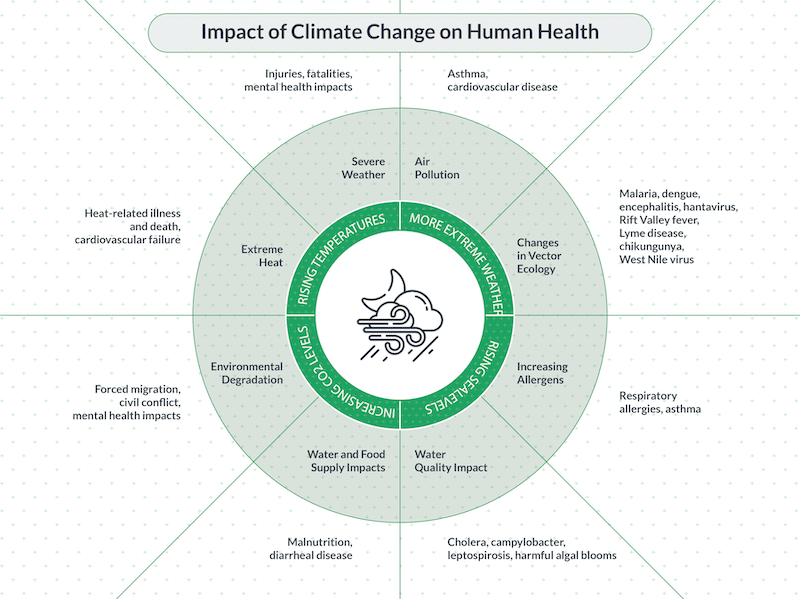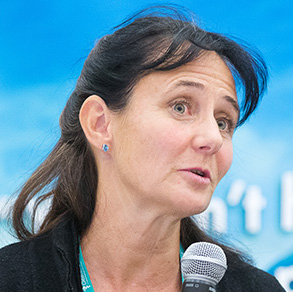Expert Tips from Sonia Roschnik, NHS' Director of Sustainable Development
Millions of people from an estimated 185 countries took part in climate rallies over the past fortnight. Over 300,000 Australians alone showed up to demonstrations, making the climate change rallies one of the largest protest events in Australian history.
While turning up to a march is a great step to supporting a healthier planet, there is always more we can do. It’s not just up to big businesses to change the way they go about things to reduce the impact on our planet. It’s up to all of us to make the changes we can, however small.
The fact is, Australia’s healthcare sector is a substantial polluter, contributing 7% to our nation’s hefty carbon footprint. Because of this, clinics can do a lot to help reduce the burden on the environment. But what exactly?
To get some tips for clinics and doctors, I talked to Sonia Roschnik, Director at Sustainable Development Unit for the National Health Service in England. Sonia has 30 years experience in healthcare planning and environmental sustainability programmes. She has advised numerous global agencies, including WHO, UNDP and China National Health and Development Research Centre.
The two-fold problem of climate change
Sonia explains that clinics and doctors are in a particularly interesting position when it comes to climate change and environmental pollution, because they are actively involved in contribution and consequence.
She says, “Dealing with patients means you not only need to be aware of how you contribute to the problem, but also how the vulnerable population might need extra support during extreme weather events.”
The chart below, put together by Centers for Disease Control and Prevention, shows some of the ways climate change impacts people’s health.

Source: Center for Disease Control and Prevention
The truth is that, in the past, greenhouse contributions made by the healthcare industry have been largely ignored or excused under the guise of “medical necessity”.
Of course, there should be some leniency on clinics if restricting the way they do things takes a toll on patients. But, the fact is, there are many things clinics and doctors can do that don’t impact patient outcomes. These are the changes we’ve honed in on.
What GPs can do to reduce their carbon footprint
Sonia explains that “while the majority of medical centres have high energy use, it’s actually the products we use that make the biggest difference to greenhouse emissions.”
According to work done by NHS and the Sustainable Healthcare Coalition, she says two of the biggest culprits are “inhalers and the chemicals used in gas-inhaled anaesthesia.”
(i) Switch propellant inhalers for dry powder
The first change Sonia suggests clinicians make is to limit to number of propellant inhalers they prescribe to patients.
She explains, “The way we’re doing it in the UK is that we’re targeting inhalers with propellants and suggesting that you can actually go for a dry powder inhaler instead. That sole thing would be one of the greatest things someone from a health centre could do to reduce their environmental footprint.”
“A case study found switching from a poorly controlled asthma device to a dry powdered inhaler, reduced greenhouse gas emissions by 50%, waste production by 60%, and water consumption by 30%.”
Sonia is careful to point out, “Obviously this switch would have to be clinically acceptable because some people do need the propellants, but for people who don’t, going for a dry powder would make a big difference.”
(ii) Anesthetise with sevoflurane, rather than desflurane
Another big culprit is the chemicals used in gas-inhaled anesthesia. Sonia explains, “There are quite a few recommendations about how to make gas-inhaled anesthesia more environmentally friendly by lowering the flow and using sevoflurane rather than desflurane.”
Consider a study in Canada, which collected data from 7 UBC-affiliated hospital pharmacies. In 2016, 401 litres of desflurane was recorded used compared to 772 litres of sevoflurane.
“While almost half as much desflurane was used, it resulted in 4 million kilograms of CO2 compared to 0.5 million kilograms of CO2 for sevoflurane. This means desflurane causes 15 times more CO2 damage than sevoflurane.”
“This simple switch can make an enormous difference,” Sonia says.
(iii) Prescribe with the environment in mind
Perhaps unsurprisingly, Sonia shares the way doctors prescribe medicines can also make a big difference to the environment. She uses the example of the difference in damage to the environment a doctor would contribute by prescribing a walking regime or mindfulness instead of anti-anxiety tablets.
Of course, this isn’t always possible, but minimising the manufacturing pollution and discarded packaging associated with prescription medicine is a good step in the right direction.
She shares, “Shifting this consciousness is hard because its about your own behaviour on a daily basis, face-to-face with patients. But I think, a huge benefit is that you can improve health outcomes for patients as well as for the planet.
“In the UK, we have a list of medicines that have the highest carbon footprint. And in Sweden, they’ve gone a step further. They’ve got what’s called a Wise List, which is usable by doctors and patients to see what more environmentally-friendly alternatives there might be. So, without losing out on the benefit you need clinically, you can find things that might be better.”
What clinics can do to reduce their carbon footprint
Clinics themselves can also make sustainable choices to reduce their carbon footprint.
(i) Reduce waste
“One of the big things is to make sure we are efficient in our use of resources,” Sonia says. “Sometimes I see people open up a number of packs, say surgical packs, when they only need one. So trying to minimise whatever you do need and being effective with what you use would make a big difference.”
Other ideas for reducing waste are using reusable cups with a wash station in the waiting room instead of ‘one use’ cups, and putting green waste bins in your staff room next to your recycling and rubbish bins.
(ii) Insulate buildings from the heat and cold
“Providing a lot of shade is also a good idea,” Sonia explains. “Especially with your heat in Australia. This can bring down your cost of cooling. And using good insulation so the building stays cool in summer and warm in winter can help.”
(iii) Go paperless
Going paperless where possible also reduces the impact your clinic has on the environment. Sending recalls by SMS instead of letters and using digital new patient registration forms are two of the easiest ways to reduce the amount of paper your clinic uses.
“This year, HotDoc’s digital recalls and new patient registration forms will save almost 1,000,000 pieces of paper.”
Other ideas to save paper include: setting your printer to automatically print double sided, proofreading your documents before printing, reusing scrap paper, and saving documents online instead of in hard copy.
(iv) Choose a location easily accessible by public transport
Sonia says clinics can also go a long way to helping the environment by being prudent when choosing the location of their clinic. “Choosing a location that is easily accessible by public transport is a big one for reducing the reliance on cars.”
If you wanted to go one step further, you could even consider adding bike lockers to your clinic to encourage staff to ride to work.
(v) Solar panels and water tanks
More common ideas are installing solar panels and water tanks. While these solutions have more substantial upfront costs, they reduce your ongoing expenses. These visible choices also send a signal to your community that sustainability is important to your clinic. This may just encourage others in the community to do the same with their homes and businesses.
(vi) Save energy
In addition to choosing renewable energy sources you can also lessen your footprint by switching your incandescent globes for LEDs. Typically LEDs run at around 10W, while incandescent globes run at 60W.
Switching off appliances and computers at the end of the day can also go a long way to reducing the amount of power you use.
(vii) Support a carbon offset program (eg. Aboriginal land management)
If you want to do even more to reduce your carbon footprint, why not consider supporting a carbon offset program? As well as helping to reduce greenhouse emissions, purchasing offset units often delivers social benefits, such as providing employment for local people, reducing social welfare, and providing health and educational improvements to those in need.

Sonia Roschnik
Director, Sustainable Development Unit, NHS
Sonia is Director at Sustainable Development Unit for the National Health Service in England. She has 30 years experience in healthcare planning and environmental sustainability programmes. She has advised numerous global agencies, including WHO, UNDP and China National Health and Development Research Centre.



